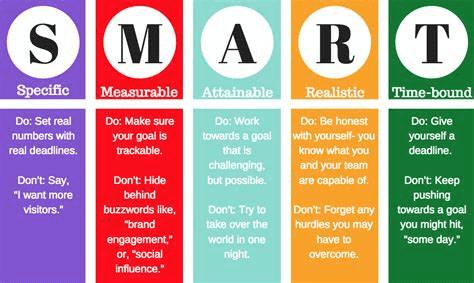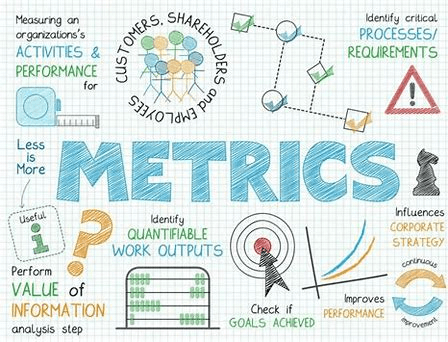In today’s digital age, having a comprehensive marketing strategy is crucial for any business that wants to succeed. With so many marketing channels and tactics available, it can be overwhelming to know where to start. That’s why it’s important to follow a structured approach to developing a tailored marketing plan that will help you reach your target audience and achieve your business goals.
To create a complete marketing strategy in 2023, there are 7 essential steps you need to follow:
- Define Your Target Marketing Strategy Audience
- Set Your Marketing Strategy Goals
- Develop Your Unique Selling Proposition
- Choose Your Marketing Strategy Channels
- Create Your Marketing Strategy Messages
- Implement Your Marketing Strategy Tactics
- Measure Your Results and Adjust Your Marketing Strategy
Each step is critical to building a successful marketing strategy that will help you stand out from your competitors and drive growth for your business.
In this blog post, we will take a closer look at each of these steps and provide you with actionable tips and insights to help you create a comprehensive marketing plan for 2023. By the end of this post, you’ll have a clear understanding of how to develop a marketing strategy that aligns with your business objectives and delivers measurable results.
So, let’s get started!
Here are the 7 steps you should follow:
Step 1: Define Your Target Marketing Strategy Audience
The first step in creating a complete marketing strategy is to define your target audience. Who are the people that you want to reach with your marketing efforts? You need to know their demographics, interests, and pain points in order to tailor your marketing messages to their specific needs.
some key features to consider when defining your target audience for your marketing strategy:
Demographics
This includes age, gender, location, income, education, and other relevant demographic information that can help you better understand your audience.
Interests
Understanding your audience’s interests and hobbies can help you create targeted marketing messages that appeal to their passions and desires.
Pain Points
What are the challenges, problems, or pain points that your target audience is facing? Identifying these issues can help you create solutions that meet their needs and provide value to them.
Buying Habits
Knowing how your target audience shops and makes purchasing decisions can help you tailor your marketing messages and campaigns to better align with their buying habits.
Online Behavior
Understanding how your target audience uses the internet can help you identify the best digital marketing channels and tactics to reach them, such as social media platforms, email marketing, or search engine advertising.
By taking the time to define your target audience and gather information about their preferences and behaviours, you can create a more effective marketing strategy that resonates with them and drives engagement and conversions.
You can use tools like Google Analytics, social media analytics, and customer surveys to gather information about your target audience. Once you have a clear picture of who your audience is, you can move on to the next step.

Step 2: Set Your Marketing Strategy Goals
Now that you know who your target audience is, it’s time to set your marketing goals. What do you want to achieve with your marketing efforts? Do you want to increase website traffic, generate more leads, or boost sales?

When it comes to creating a marketing strategy, setting goals is essential. But not all goals are created equal. That’s where SMART goals come in. SMART is an acronym that stands for Specific, Measurable, Achievable, Relevant, and Time-bound. Let’s break down each of these elements:
Specific
Your marketing goals should be specific and focused. This means clearly defining what you want to achieve and why it’s important. For example, instead of setting a vague goal like “increase sales,” a specific goal would be “increase online sales by 20% in the next quarter.”
Measurable
Your goals should be measurable so that you can track progress and measure success. This means setting clear metrics or KPIs (key performance indicators) that will help you determine whether you’re on track. For example, if your goal is to increase website traffic, a measurable KPI could be “increase website visitors by 25% within the next month.”
Achievable
Your goals should be challenging but achievable. This means setting goals that are realistic and within reach based on your available resources and capabilities. For example, setting a goal to “double revenue in a week” may not be achievable, but setting a goal to “increase revenue by 10% in a month” is more realistic.
Relevant
Your goals should be relevant to your overall business objectives and marketing strategy. This means setting goals that will help you achieve your broader business goals, such as increasing brand awareness, driving sales, or expanding your customer base.
Time-bound
Your goals should have a clear deadline or timeframe. This means setting a specific date or period by which you want to achieve your goals. For example, setting a goal to “generate 50 new leads in the next two weeks” is time-bound.
Your goals should be specific, measurable, achievable, relevant, and time-bound (SMART). By setting SMART goals, you can track your progress and adjust your strategy as needed.
Step 3: Develop Your Unique Selling Proposition
Your unique selling proposition (USP) is what sets your brand apart from your competitors. It’s the reason why customers should choose your products or services over others.

To develop your USP, you need to identify what makes your brand unique. This could be your product features, your pricing strategy, your customer service, or something else entirely. Once you have identified your USP, you can use it to guide your marketing messages.
Your USP is what sets you apart from your competitors and makes you unique in the eyes of your target audience. To identify and develop your USP, you need to take a closer look at your business and what you offer.
Identify Your Competitive Advantage
What is it that you do better than your competitors? What unique qualities or features do you offer that your competitors don’t? This could be anything from superior product quality, faster shipping, better customer service, or a more convenient user experience.
Understand Your Target Audience
What do your customers want or need from your product or service? What problems do they have that you can solve? Understanding your target audience and their pain points can help you identify how you can best differentiate yourself and provide value.
Craft Your Value Proposition
Your value proposition is a clear and concise statement that communicates your USP to your target audience. It should highlight your competitive advantage and explain why your product or service is the best choice for your customers. This statement should be unique, memorable, and easy to understand.
Test and Refine
Once you have developed your value proposition, it’s important to test it with your target audience to see how it resonates with them. You can do this through surveys, focus groups, or A/B testing. Based on their feedback, you can refine and improve your USP to make it even more compelling and effective.
Step 4: Choose Your Marketing Strategy Channels
There are many different marketing channels that you can use to reach your target audience. Some of the most popular options include-
Social Media
Social media platforms such as Facebook, Twitter, and Instagram offer a great opportunity to connect with your target audience, build brand awareness, and drive engagement. By creating and sharing content that is relevant and valuable to your audience, you can foster a community of loyal followers and drive traffic to your website.
Email Marketing
Email marketing is a cost-effective way to communicate with your customers and prospects, build relationships, and drive sales. By sending targeted and personalized emails that offer value and address their needs, you can nurture leads and build brand loyalty over time.
Search Engine Optimization (SEO)
SEO is the process of optimizing your website to rank higher in search engine results pages (SERPs). By optimizing your website’s content and structure, and building quality backlinks, you can increase your visibility and drive organic traffic to your website.
Pay-Per-Click (PPC) Advertising
PPC advertising allows you to target specific keywords and audiences with paid ads on search engines and social media platforms. By creating effective ad campaigns and targeting the right keywords and demographics, you can drive traffic and conversions for your business.
Content Marketing
Content marketing is all about creating and sharing valuable and relevant content that attracts and engages your target audience. This can include blog posts, videos, infographics, and social media content. By providing value and building trust with your audience, you can drive traffic and conversions over time.
Influencer Marketing
Influencer marketing involves partnering with social media influencers to promote your brand and products to their followers. By identifying relevant influencers and creating campaigns that align with their values and interests, you can reach new audiences and build credibility for your brand.

You should choose the channels that are most likely to reach your target audience and align with your marketing goals. It’s important to remember that different channels require different strategies, so you may need to adjust your messaging and tactics accordingly.
Step 5: Create Your Marketing Strategy Messages
Now it’s time to create your marketing messages. Your messages should be tailored to your target audience and aligned with your USP.
Here’s an example of a marketing message that is conversational, unique, and catchy:
“Looking for a way to simplify your life and stay organized? Our innovative app is here to help! With user-friendly features and customizable options, you can easily manage your tasks, appointments, and to-do lists all in one place. Say goodbye to the stress and chaos of juggling multiple apps and calendars, and hello to a more streamlined and efficient way of managing your life. Download our app today and start simplifying your life!”
This marketing message is conversational and friendly, using language that speaks directly to the target audience and addresses their needs and pain points. It also highlights the unique features and benefits of the app, using words like “innovative” and “user-friendly” to create a sense of excitement and curiosity. Finally, the message ends with a clear call to action, encouraging the audience to take action and download the app today.
You should consider the tone and voice of your messages, as well as the format (e.g. blog posts, social media posts, videos, infographics, etc.). It’s also important to create a consistent brand image across all your marketing channels.
Step 6: Implement Your Marketing Strategy Tactics
With your marketing messages in place, it’s time to implement your tactics. This could include posting on social media, creating email campaigns, optimizing your website for SEO, running PPC ads, and more.
How you can create a clear plan for executing your marketing tactics?
Set Specific Goals
Identify specific marketing goals for each tactic, such as increasing website traffic, generating leads, or boosting sales. Make sure each goal is measurable and achievable within a specific timeframe.
Define Your Budget
Determine how much you can realistically spend on each tactic based on your overall marketing budget. Consider factors such as ad spend, content creation, and tools or software needed to execute the tactic.
Allocate Resources
Determine who will be responsible for executing each tactic and allocate the necessary resources, such as time, tools, and expertise, to ensure successful implementation.
Create a Timeline
Create a timeline for each tactic, breaking down the steps needed to execute the tactic and assigning specific deadlines for each task. This will help keep you on track and ensure timely execution.
Monitor Progress
Regularly monitor the progress of each tactic to see if you’re on track to meet your goals. Use analytics and other measurement tools to track metrics such as website traffic, engagement, and conversions.
Adjust Your Strategy
Based on your progress and results, adjust your strategy as needed. This may involve shifting your budget, revising your timeline, or changing your tactics altogether.
You should have a clear plan for how you will execute your tactics, including timelines, budgets, and resources. It’s also important to track your results and adjust your tactics as needed.
Step 7: Measure Your Results and Adjust Your Marketing Strategy
Finally, you need to measure your results and adjust your strategy accordingly. You should track key metrics like website traffic, conversion rates, and ROI to see how your marketing efforts are performing.
Here are some key metrics you should track:
Website Traffic
Keep an eye on your website traffic to see how many people are visiting your site. This can help you determine if your marketing tactics are driving traffic to your site.
Conversion Rates
Track your conversion rates to see how many visitors to your site are taking the desired action, such as making a purchase, filling out a form, or subscribing to your newsletter.
ROI
Measure your return on investment (ROI) to see if your marketing tactics are generating a positive return. Calculate the revenue generated by your marketing efforts and compare it to the cost of executing those tactics.
Engagement Metrics
Track engagement metrics such as likes, comments, and shares on social media to see how your audience is interacting with your content.
Email Metrics
Monitor email metrics such as open rates, click-through rates, and unsubscribe rates to see how effective your email marketing campaigns are.
Customer Lifetime Value
Calculate the lifetime value of your customers to see how much revenue each customer generates over time. This can help you determine the effectiveness of your customer acquisition and retention efforts.

Based on your results, you may need to adjust your tactics, messaging, or even your target audience or goals. By continuously evaluating and refining your marketing strategy, you can ensure that you are making the most of your marketing budget and reaching your business objectives.
Congratulations, you now have a complete marketing strategy for 2023! By following these 7 steps, you can create a tailored marketing plan that will help you reach your target audience and achieve your business goals.





